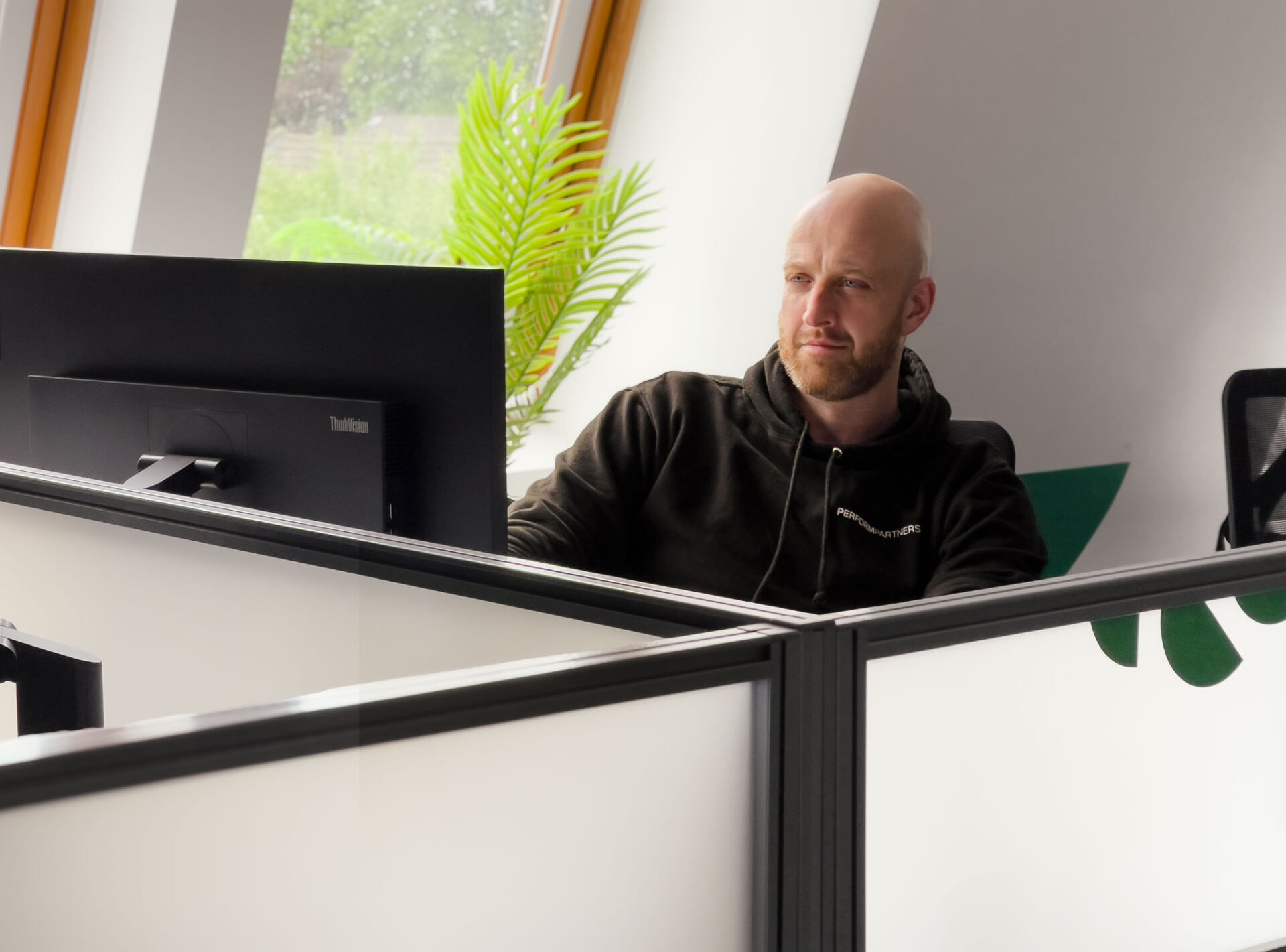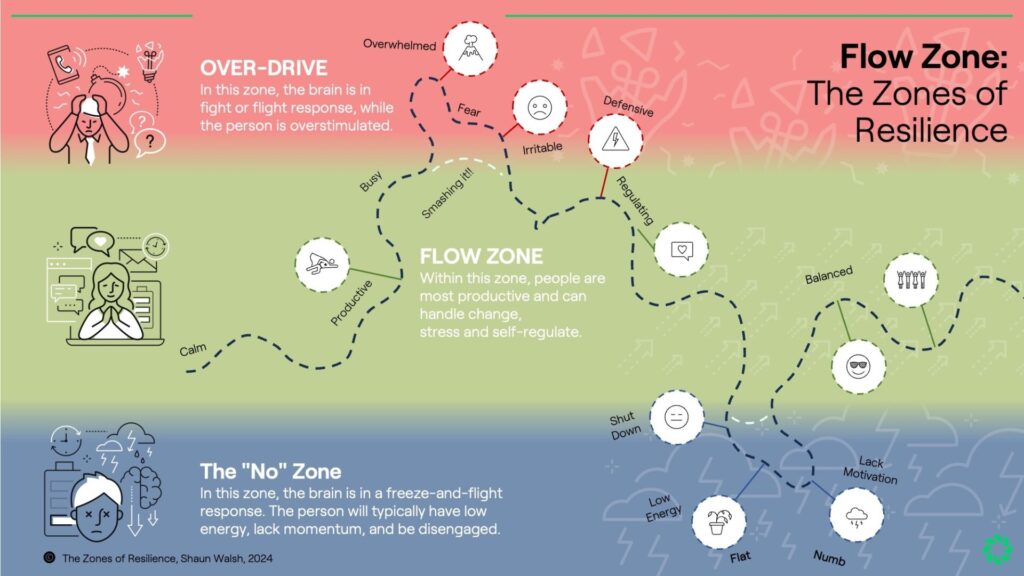Effective Change Delivery and the Zones of Resilience

Effective change delivery almost always revolves around three fundamental elements: people, processes, and technology. From my experience working in different sectors such as Financial Services, Healthcare, Advanced Technologies and Defence, Real Money Gaming, and Higher Education, I know that while processes and technology change initiatives are often predictable in their approach, people — the beating heart of every organisation — present a less defined route when transitioning change and often pose a more complex challenge. Herding cats often comes to mind!
Understanding and leveraging the learnings from the ‘Window of Tolerance’ can be a strategic advantage for leaders, helping them navigate and adapt their change initiatives more effectively.
The Window of Tolerance
Originally coined in the context of therapy, the Window of Tolerance describes the optimal zone of stimulation where people can function effectively, even under stress. When this concept is applied to organisational change, it can help leaders understand the Zones of Resilience and navigate the balance between pushing for necessary transformations and maintaining the emotional health and psychological safety of themselves and their teams.
What are the Zones of Resilience?
The Zones of Resilience consists of three states:

Over-drive
In this state, individuals experience stress, fear and anxiety. They may feel overwhelmed, irritable, and unable to focus. They are overstimulated. In any fluctuations of life, people will step into this state infrequently. However, prolonged periods of time in this zone can result in increased conflicts and misunderstandings, poor decision-making under pressure, and resistance to further change due to stress, or in a work sense, rushed and low-quality work or high turnover and absenteeism.
Flow zone
In the Flow zone individuals feel calm, focused, and in control. Within this zone, people are most productive and can effectively handle change, stress and challenges. This is the optimal zone, resulting in high performance, consistency and motivation, feeling empowered and capable, or in a work sense, meeting deadlines, high team morale, and a resilient culture to changes.
No zone
In the No zone, individuals typically have low energy, lack momentum, and are disengaged. They may feel numb, unmotivated, and disconnected. They are understimulated. As a result, they may retreat away from social groups and lack interest, passion, and engagement. In a work sense, they may miss deadlines or increase errors, show low team morale, and engage poorly with the customer.
Understanding these three states allows leaders to identify when employees are within their Flow Zone, and when they are either understimulated or overstimulated. Effective change management involves strategies to keep employees within this state, ensuring psycholigical safety, mental wellbeing, and resilient during periods of change.
Common Barriers to Effective Change
To navigate through change effectively, it’s crucial to understand the common barriers that can derail the process, leading individuals to fluctuate and flex through different zones. Here are eight reasons employees often resist change with actionable strategies to address them:
- Fear of the Unknown: Uncertainty about the future can lead to anxiety and resistance.
Actionable Strategy: Conduct regular town hall meetings and Q&A sessions where employees can voice their concerns and get clear, honest answers. This transparency builds trust and reduces fear. - Loss of Control: Changes imposed without employee input can cause feelings of helplessness.
Actionable Strategy: Form change advisory committees that include representatives from various departments. This inclusion fosters a sense of ownership and control among employees. - Poor Timing: Introducing changes during high-stress periods can overwhelm employees.
Actionable Strategy: Use data analytics to identify low-stress periods within your organisation and time your change initiatives accordingly. A well-timed change can significantly reduce resistance. - Lack of Visible Benefits: If the benefits of change are not clear, resistance is likely.
Actionable Strategy: Develop and share case studies or pilot project results that highlight the positive impacts of similar changes. Visual evidence of success can help in gaining buy-in. - Changing Job Roles: Changes that alter job roles or threaten job security can create resistance.
Actionable Strategy: Provide clear career progression pathways and retraining opportunities. Assure employees that the change is an opportunity for growth rather than a threat to their job security. - Poor Communication and Engagement: Lack of clear communication can lead to misunderstandings and resistance.
Actionable Strategy: Implement a robust communication strategy that includes regular updates through multiple channels (email, intranet, meetings). Consistent messaging helps maintain clarity and reduces misinformation. - Negative Past Experiences: Previous poorly managed changes can lead to scepticism.
Actionable Strategy: Address past failures openly and explain what will be different this time. Highlighting lessons learned and improvements made can rebuild trust. - Cultural Misalignment: Changes that clash with the existing corporate culture can be resisted.
Actionable Strategy: Align change initiatives with your company’s core values and cultural strengths. Involve cultural ambassadors or champions to advocate for the change within their teams.
Leveraging Change Support
Navigating change is a complex but essential aspect of business leadership. Change leaders can more effectively guide their organisations through change initiatives by understanding and leveraging the Zones of Resilience. Implementing the above strategies can help maintain employee well-being, foster a culture of resilience, and ensure the success of change initiatives.
For many organisations, assembling an in-house team to manage change however, can be complex, slow and resource-intensive; impacting other projects success. Perform Partners offers specialised Change Squads to drive real, effective business change. Our expert teams provide the capability and flexibility to support your evolving business initiatives, ensuring successful transitions and sustainable improvements.
Let’s transform your business challenges into opportunities for growth and success. Speak with us to create a resilient, adaptable organisation ready to thrive in the face of change.

